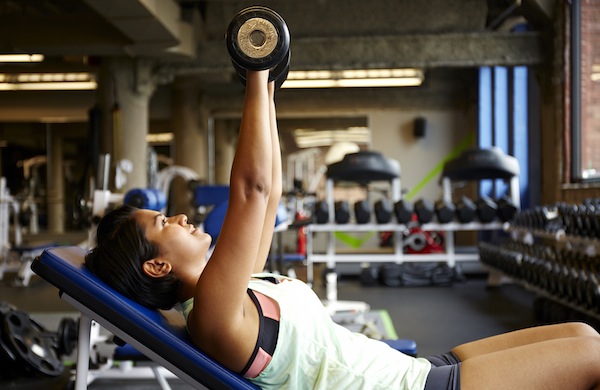
It’s no wonder that Minneapolis residents love to get outdoors and exercise, given the more than 22 lakes in the metropolitan area—including the Chain of Lakes, four of the city’s largest lakes, located a mere 10 minutes from downtown. But during the city’s brutal winters, complete with sub-zero temperatures, Minneapolis gyms are in high demand when exercising outdoors becomes treacherous.
Gyms are also a great place for men and women to focus on strength-training routines. At The Firm Minneapolis, yoga, Pilates Barre, and barre classes all blend strength and flexibility training to help sculpt long, lean muscles. But even if women take classes designed to make men well-muscled, they shouldn’t worry about bulking up. A rigorous strength-training routine can help a woman boost her endurance and lower her body-fat percentage, but it won’t help her develop hulking muscles (not without anabolic steroids, anyway).
Ever wonder why workouts do different things for women and men?
Estrogen Gets in the Way
The hormone, which is present in both men and women at different levels, works hard to limit the body's capacity to develop new muscle tissue. This has a practical explanation. Women's bodies have evolved to retain the ample fat stores needed to ensure fertility and successful pregnancy. Men's bodies don't have the same obligation, so they possess far larger quantities of testosterone—the muscle-building hormone—than women do. This is an example of sexual dimorphism, a physical difference between males and females of the same species, not unlike the male peacock's feathers or the lion's mane.
We’re Born with Different Sizes of Muscle Fibers
Regardless of gender, our muscles are made up of two types of fibers. Type I, known as “slow-twitch” fibers, are most associated with endurance. Type II, known as “fast-twitch” fibers, are most associated with strength and power. Between these, fast-twitch fibers have the greatest potential for growth—they’re the ones most responsible for the bulky, ripped look that characterizes bodybuilders and action stars. It should be no surprise, then, that men start out with larger fast-twitch fibers and smaller slow-twitch fibers than women. This difference makes it much harder for women to grow muscles as large as their male counterparts.








